Jacob “Kobi” Margolin is founder and CEO of Clinigence of Atlanta, GA.

Tell me about yourself and about the company.
I’m the CEO and founder Clinigence, my third venture in healthcare IT. I am semi-Americanized, an Israeli originally. In the mid-1990s after seven years in an intelligence branch of the Israeli Defense Forces with a group of colleagues that I met in the military, we started Algotec, a medical imaging company. With Algotec, I came to Atlanta in 1999 to start US operations.
We sold the company to Kodak in 2004. I then joined a startup at Georgia Tech that focused on the Software-as-a-Service (SaaS) model in medical imaging.
At my first company, Algotec, we were pioneers of bridging web technologies into the PACS market. These were days when medical imaging went through the electronic revolution. Our technology was all about distributing clinical images across the enterprise and beyond. My second company, Nurostar Solutions, capitalized on this electronic revolution and the SaaS model to facilitate new business models for imaging services. In those days, teleradiology was exploding and we became the leading technology platform for these services.
In 2008, I started on a path that led me to Clinigence today. 2008 was an election year. In the days leading to that election, I looked at what was going on in the market and thought that there might be new opportunities opening up around electronic medical records. I had followed the EMR market since my first HIMSS in 1997 in San Diego. The market was advancing, as one of the analysts put it, at glacial speed. Then in 2008 or 2009, suddenly an explosion of funds was allocated for this market. I started thinking about what was coming next. Let’s assume that the market is already on electronic medical records. What impact is that going to have?
That led me to the concept of clinical business intelligence, which in essence is, how do we make sense of the data in electronic medical records from both the clinical and business or financial standpoint for the benefit of healthcare providers, for the benefit of medical practices and their patients? This is when we started Clinigence.
Officially started in 2010, we had our first beta in February 2011 and our first commercial installation in October 2011. Today we are in over 70 medical practices with about 400,000 patients on the platform, with two EMR companies as channel partners. We just signed our second partner a few weeks ago and our first ACO customer just a few days ago.
How do you position yourself in the market and who do you compete most closely with?
In the clinical analytics industry, we are unique in that we are entirely provider centric. We jumped into clinical analytics with the vision that everything is going to be inside clinical operations and everything is going to be electronic. We have created a technology foundation that uses electronic medical record data as its primary source.
If you look at clinical analytics, that is a multi-billion dollar industry. Pretty much all of that industry has focused on healthcare payers or health plans. The technologies are based on administrative or claims data. There are specific benefits ,we believe, in the use of EMR data as your primary source. The number one differentiator for us is in the use of EMR data, which allows us to do three things.
Number one, our reports are real time. We create a real-time feedback loop that takes the data from the provider system and goes back to the providers and helps them change the way they deliver care to their patients in more proactive ways.
Number two, our reports are very rich in outcomes. We all know that the ultimate goal of everything we’re doing in health reform today and healthcare transformation is patient outcomes. Yet a lot of the reports you look at today in the market don’t give you any outcomes in them, because the data that’s used to generate them is data for billing purposes that doesn’t include clinical outcomes.
Number three, because we focus on the system that comes from the healthcare provider organization itself, we give providers the ability to break the report all the way down to individual patients and individual clinical data elements. The reports are not anonymous for them. The reports are something that they can trust, something they can work with. With that, we have the power to change the behavior of providers and affect behavior change in their patients, which improves outcomes.
If a physician is receiving reports from your system, what kind of improvements might they suggest?
The reports from our system drive a process, the process of improvement. It’s like peeling layers of an onion. We focus today almost exclusively on primary care. When we go to a primary care practice, we first have the physicians look at how they document clinical encounters today.
Oftentimes the outer layer of the onion is helping the practice or the individual physicians with their documentation practices — making sure that they’re documenting everything that needs to be documented. We often find that physicians say, “Oh, we do these things,” but when you look down at their report, it doesn’t show it. It turns out that they’re doing things, but they’re not always documenting them or not documenting them correctly.
Then the second layer is we help the practices compare their performance, the compliance of their staff, with medical guidelines, recommended care, and sometimes their own protocols within the organization or the practice. You go into a practice and you ask the doctors, “Do you follow these protocols?”
For example, in family medicine, diabetes is chronic disease number one. The recommended guidelines, recommended care protocols for diabetes are pretty well established. We know the things we need to do. You go in and ask the physicians and they always say, “Of course we follow medical guidelines. Of course we do all the things that we’re supposed to.”
Then you start breaking the data down to reports across the organization, across the staff within the practice. Almost inevitably you find that there are variations in care, differences among providers and their compliance with these protocols which lead to gaps in individual patient care. We help them find these variations in process compliance, close these gaps, and improve their compliance with those medical guidelines and protocols.
The deepest layer of the onion, which only a few of the practices we’re working with are at that level — certainly in the ACO market we think that there’s going to be more of that — is about going into the effectiveness of your protocols within the practice in driving outcomes and that goes both to patient outcomes and eventually to business or financial outcomes for the practice. In this context, we give the customer the power, essentially, to do things like comparative effectiveness, look at various protocols that they use and see which ones are driving the outcomes or the results that they want.
The ACO concept is new enough that I’m not sure anybody really understands how they’re going to operate. Does anybody know how to use the data that you’re providing to manage risk, specifically within an ACO model? Or is it just overall quality and that’s what ACO should encourage?
I think that the ACO market is indeed still a baby. OK, it’s a newborn. Everybody is at the beginning of a journey. Even some of the organizations that have been doing this for the longest, like the pioneer ACOs, are still in very early stages.
We are focusing in the ACO market on finding organizations that we think have the best shot of going through this journey and being successful in going through this journey. We come to them and offer them a partnership in the journey, where we become somewhat of a navigation system for them with the kind of reports I mentioned earlier. Then really all that our technology can do — empower them with those navigation tools to find the roads that lead to the holy grail of accountable care, to find the roads to the triple aim of health reform.
As I’ve said, we’ve just closed our first ACO customer, so it’s going to be presumptuous of me to say, “Yes, the answers are already there.” But with the three things that I mentioned earlier, specifically, primary care driven and physician-led ACOs have unique potential of identifying, figuring out the ways to get to that holy grail. We think that our technology is a critical piece that can help them and then accelerate them in their path towards that holy grail.
Describe the patient-centered medical home model and the data capabilities physicians need to operate under that.
In primary care, we are doing much more work on medical homes than ACOs because ACOs are still few and far between. There is great interest in the patient-centered medical home model.
The patient-centered medical home model in itself is only a care delivery model. It does not come with a payment model attached to it, but there are certain markets where payers actually offer incentives to those practices that go to the patient-centered medical home model.
To become a patient-centered medical home, there are specific areas that the practice needs to address. NCQA offers a certification process that has become the de facto standard in certification as a medical home. They don’t necessarily force you to have an electronic medical record, so you can potentially become a patient centered medical home even without one. But what we would say is, as you look at your goals in the patient-centered medical home — specifically goals around continuous quality improvement, goals around population health management — using electronic medical records becomes necessary, a prerequisite to your ability to engage seriously in those kinds of efforts.
We typically come in with our technology after the practice implements or adopts electronic medical record technology and help them take the data in their electronic medical record and translate that into a clear path towards quality improvement.
Is it hard to get physicians to follow your recommendations?
Most physicians are independent. They don’t like to be told what to do. Before I started Clinigence, I looked at clinical decision support and decided not to jump into it, basically because I didn’t want to be in a position to tell physicians what to do. Instead, I selected clinical business intelligence. It was more around telling physicians how well they’re doing and how well their patients are doing.
One of the unique aspects of what we’ve built is that we created a “declarative classification engine,” which in essence means that the physicians can ask the system whatever question they want about their operations, about their patients, about their quality. We give them flexibility to go around the medical guidelines that come from the outside sources, build their own protocols, and then look at compliance and look at their performance relative to the protocols that they have set up for themselves.
You have to be somewhat careful when you do that. If you’re looking for success under a specific pay-for-performance program, then you have to abide by whatever the payer or some outside authority has set for you, and it is not uncommon for us to have variations or flavors of the same guideline. One that measures performance for the outside reporting purpose, and then a second one or even a number of them that give the practice the ability to create their own flavor of protocols.
Then it’s no longer somebody telling you – Big Brother telling you — what to do. You have the power to determine what to do. I think the ACO model — and to some degree, also the patient-centered medical home as a step towards the ACO model – puts the physicians within those ACOs in the driver’s seat. Nobody is telling them where to go or what road to try in order to drive the success of the ACO.
There are 33 quality metrics for an ACO that are defined by Medicare. We say, “Is this sufficient?” Clearly these metrics are necessary; you have to report on those to Medicare. But are these sufficient? Will these guarantee your success?
It is clear to everybody in the ACO market that the answer is no. These may provide a starting point, but nothing more than that. You have to carve your own way to achieve the outcomes. We know what outcomes are desired, but as far as how to get there, much is still unknown. There’s great need for innovation in fact in the market to figure it out.
A number of Israel-based medical technology companies have come in to the U.S. market, a disproportionate number based on what you might expect. Why are companies from Israel so successful in succeeding here?
My personal story may be a bit of a reflection of the success story of Israeli medical technology. Israel has become a Silicon Valley, an incubator of technology. Israel has more technology companies on Nasdaq, I think, than all of Europe combined. A lot of it is around the medical field.
Why has Israel has become that? I can speak from my own personal experience. There’s a book called Start-up Nation that was written by Dan Senor that looked more generally at this same question. His thesis in the book is that the military in Israel is the real incubator, the real catalyst for innovation.
I can say from my experience it really was like that. In my first company, Algotec, we started fresh out of the military. We were a group of engineers in the military. We knew very little about healthcare, certainly not healthcare in the US.
What we knew — and what the military instilled in us — was the desire to do something, to innovate, to create something. Beyond the desire, also the confidence to think that at the early age and early in our careers as we were back then, that we could do something like that. We could go and make a difference like that.
There’s a lot of that going on in the medical field. I joke around that every Jewish mother wants her kid to be a doctor. Certainly there’s a lot of that here in the States. When I was growing up, somehow I was never really attracted to that. I was more on the exact scientific side. For my undergrad, I chose math and physics. In grad school, medical physics for me was a way to bridge the gap, to fulfill at least a portion of the wishes of my mother.
Any concluding thoughts?
You asked me about the process that we go with practices and I said it’s like peeling layers of an onion. Today, mostly with our clients we focus with them on some of the outer layers. We help them comply with pay-for-performance or create a patient-centered medical home.
But where I think all of this gets really exciting and interesting is when you start getting to the deeper layers. We took great efforts to build a platform that’s very flexible. The unique piece I mentioned earlier in this context was the declarative classification engine. We also built what we believe is the first commercial clinical data repository that’s based on semantic technologies. Now this may sound to some folks like technology mumbo jumbo, but what’s important here is the ability to get data — any type of data — and make sense of it, so the system can understand the data even if it has never seen data like that before.
We think that over time, as our healthcare system goes through this journey of figuring out how to deliver more effective and efficient care, we can with technologies like that drive or create a bridge in between medical practice and medical science or medical research. Imagine that all of medical research — pharmaceuticals that go to the market or new devices that go through clinical trials — where they test the devices on hundreds or thousands of patients. We are building a system that can collect data from many millions of patients. Already today we are collecting data on hundreds of thousands of patients every day in medical practices.
Imagine what kind of insights we can get out of the data that we’re collecting, and then how this can then accelerate medical knowledge. Not just in the context of the holy grail of accountable care – helping deliver care that’s more efficient and effective – but really advancing medical science, identifying new things, new treatment protocols that otherwise we would never know about or would take us generations potentially to find.
Comments Off on HIStalk Interviews Kobi Margolin, Founder and CEO, Clinigence

















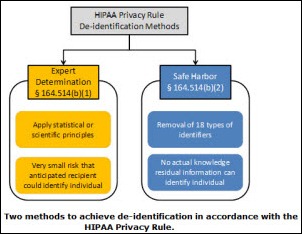






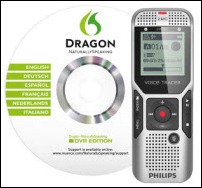




















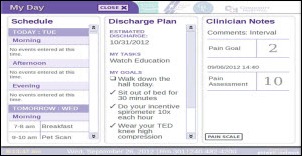

























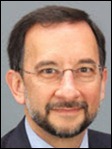
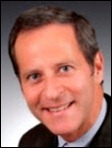






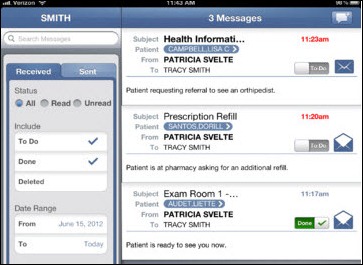




Really interesting perspective — especially around the EHR market. What I’m seeing lines up with this: Epic keeps consolidating, Oracle/Cerner…